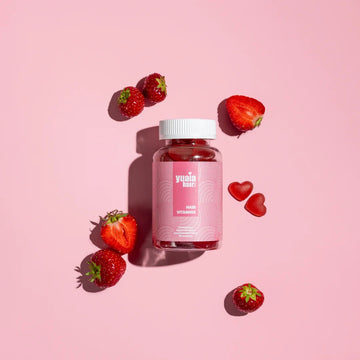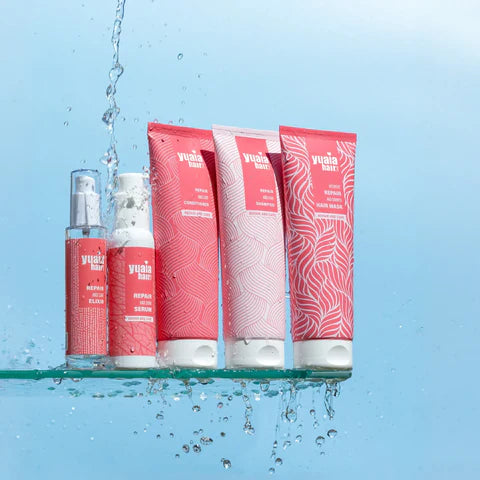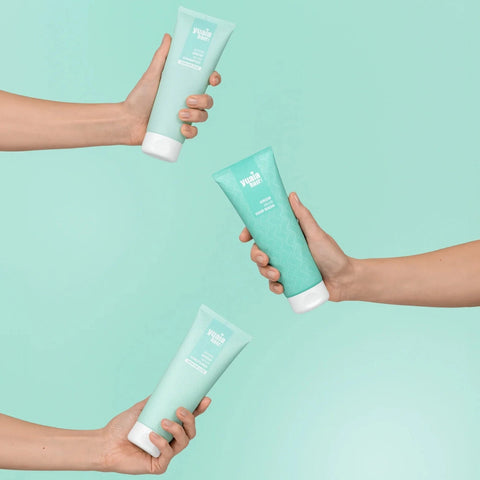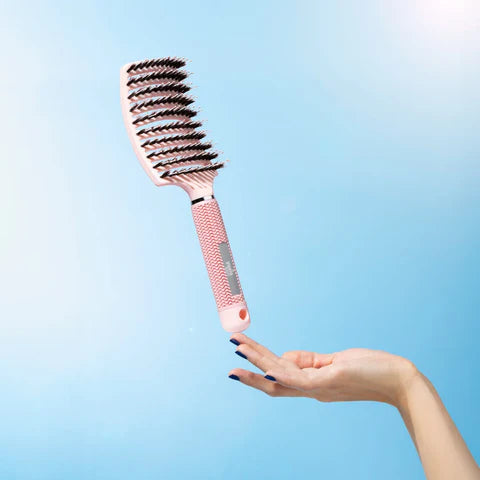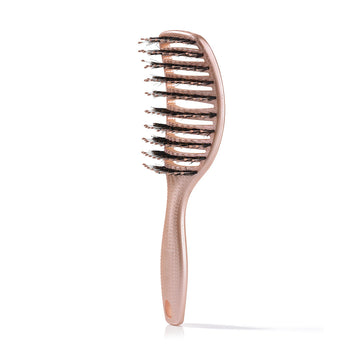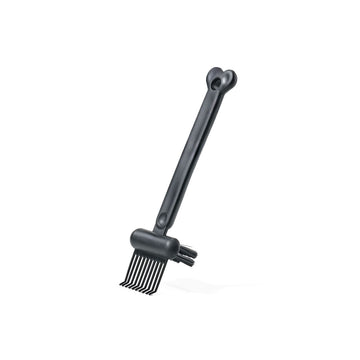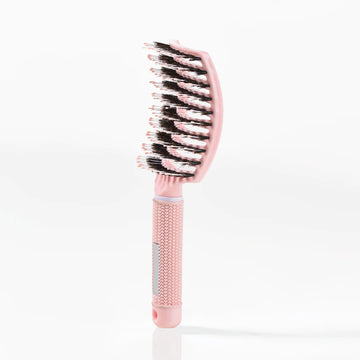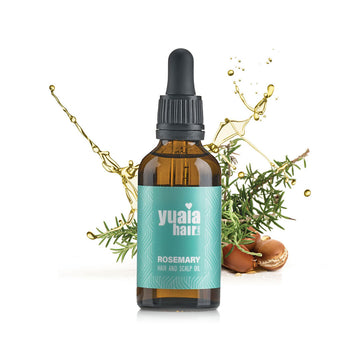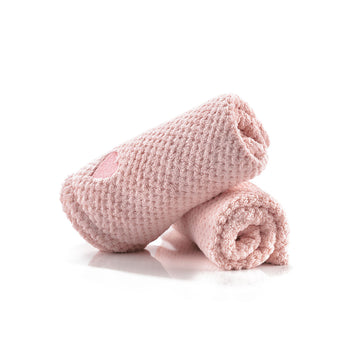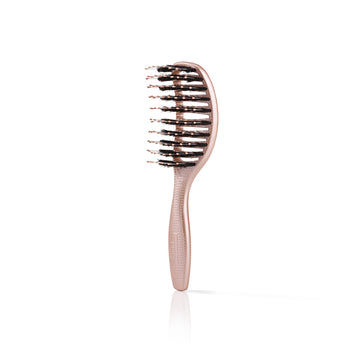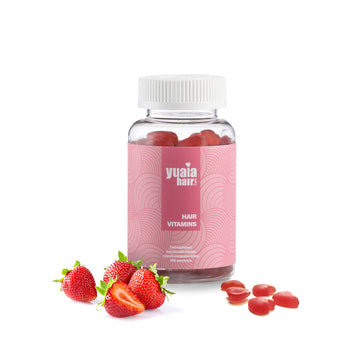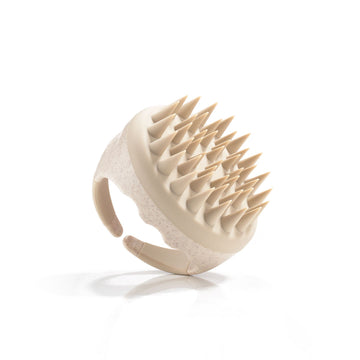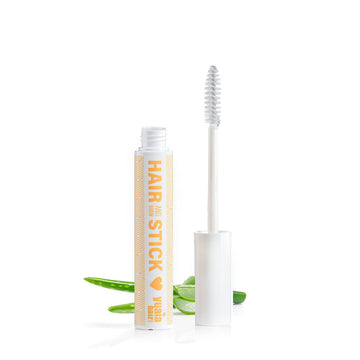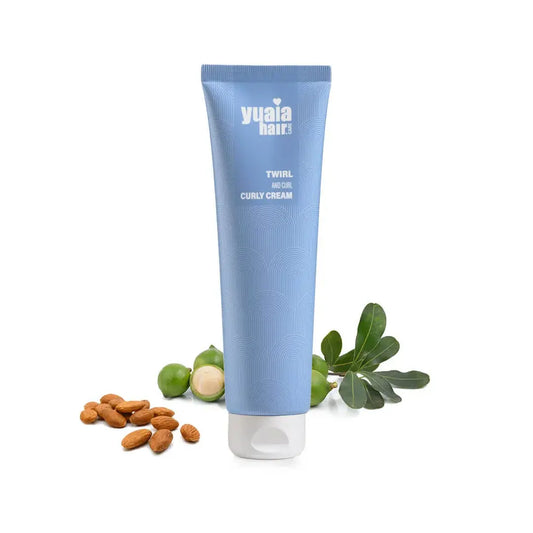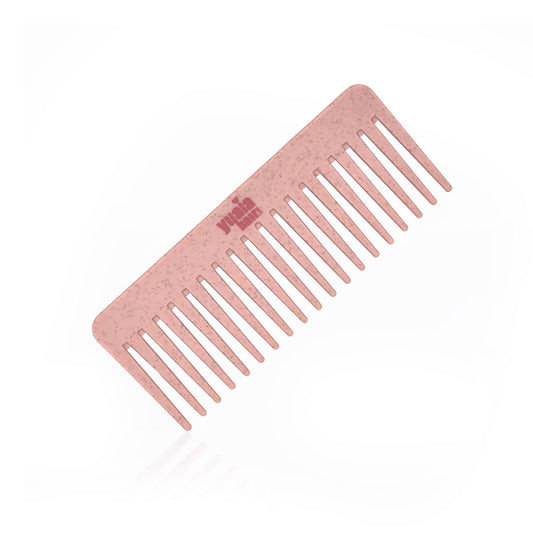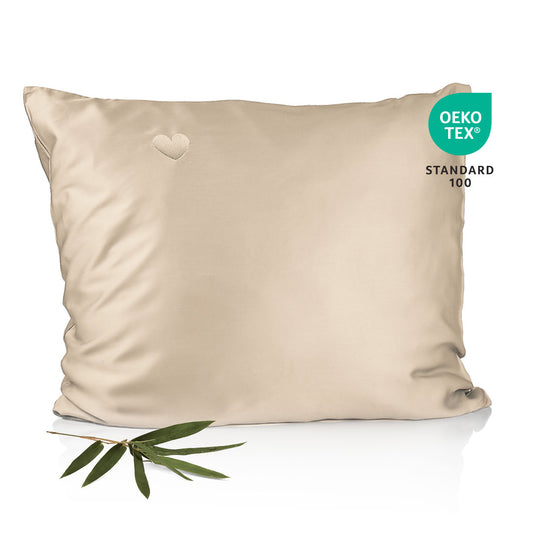
Type 2C hair
2C hair is thicker and coarser than 2B, with more defined waves that often begin at the root. This hair type can sometimes border on true curls and is known for its robust texture. It naturally offers volume but also has a higher tendency to frizz, especially in humid or rainy weather. Due to its structure, 2C hair is more prone to tangling and can be challenging to manage without the right hair care routine.
Care and products for 2C hair
This hair type tends to frizz easily and benefits from products that provide both hydration and hold. To care for the hair effectively, consider the following:
-
Moisturizing shampoos and conditioners to keep the hair shaft nourished and soft
-
Leave-in treatments that help lock in moisture and reduce frizz
-
Curl creams with light hold, applied to damp hair, to enhance the wave pattern without weighing the hair down or making it greasy
These products work together to maintain the natural structure of the hair and minimize unwanted frizz.
Detangling and deep conditioning
-
Avoid brushing dry 2C hair, as this can cause frizz and breakage.
-
Instead, detangle while wet and conditioned, using either your fingers or a wide-tooth comb to prevent damage.
-
This approach maintains the wave pattern and keeps the hair healthy.
-
Apply a deep conditioning treatment once a week to help lock in moisture and improve manageability.
-
Weekly deep conditioning makes the hair softer, stronger and easier to style throughout the week.
Styling tips for 2C hair
-
Moisture-preserving methods like plopping and air-drying work especially well for 2C waves.
-
Plopping enhances curl clumps and reduces drying time.
-
Air-drying helps prevent heat damage and maintains wave definition.
-
Diffusing with a blow dryer on low heat and speed can be used occasionally, especially when quicker drying or added root volume is desired.
Night care and extra definition
-
Using a bamboo pillowcase helps reduce friction, which minimizes frizz in the morning.
-
For added structure, a lightweight mousse or gel applied before drying can provide the necessary hold to maintain defined waves throughout the day.
Type 3A hair
3A curls form loose, spiral-shaped ringlets with a circumference similar to sidewalk chalk. These curls are typically shiny, springy, and well-defined, giving the hair a voluminous, bouncy appearance when properly maintained.
However, 3A hair often lacks consistency in curl pattern across the scalp. While some sections may form structured spirals, others may appear more relaxed, resulting in uneven texture if not styled with intention.
Challenges and considerations
Frizz is a frequent concern for 3A curls, particularly in humid conditions or after brushing. The structure of the curls can also be easily weighed down, making it difficult to retain volume at the roots. Because these curls are looser than types 3B or 3C, they may appear stretched or limp over time, especially when heavy products or frequent styling are involved.
Hydration and treatment
Maintaining moisture is essential for 3A curls. Well-hydrated strands tend to hold their shape better and resist frizz. For optimal results, consider:
-
Choosing products that contain aloe vera, glycerin, or panthenol, as these ingredients enhance softness and elasticity
-
Using water-based formulations, which deliver moisture without leaving residue
Including a pre-poo treatment in your routine can provide additional protection for 3A hair. This involves:
-
Applying coconut oil, argan oil, or avocado oil before washing
-
Letting the oil sit for 15–30 minutes before shampooing to help preserve natural oils and make the hair easier to manage
Styling and maintenance techniques
-
Use curl-defining gels and creams: These help reduce puffiness and flyaways while holding the curl pattern in place.
-
Apply to soaking wet hair: Distribute product using the “praying hands” method or by finger raking to maintain natural curl clumps and ensure even coverage.
-
Refresh between wash days: Use a water-based spray bottle mixed with diluted leave-in conditioner to revive curls without needing a full wash.
-
Protect curls overnight: Sleep on a bamboo pillowcase, or wrap the hair in a bamboo scarf to reduce friction and preserve the curl shape until morning.
Detangling and drying tips
-
Avoid brushing dry 3A hair, as it can disrupt the curl pattern and cause frizz.
-
Instead, gently detangle in the shower using a wide-tooth comb or your fingers while conditioner is in the hair.
-
For drying, it’s best to either let the hair air-dry or use a diffuser on low heat and low airflow.
-
This helps preserve volume at the roots and protects the natural curl shape.
Type 3B hair
Type 3B hair features tighter, springy curls compared to 3A, with a diameter similar to that of a Sharpie marker. These curls are more voluminous and densely packed, resulting in a full-bodied appearance that naturally draws attention.
However, the density can also make it harder for natural scalp oils to travel down the hair shaft, increasing the risk of dryness. Shrinkage is common, meaning the hair often appears shorter in its natural state.
Texture variation
This hair type is characterized by a combination of different textures. Some strands form tight spirals, while others are looser or more frizzy. This creates a varied structure throughout the hair, making daily care more complex. Since each part of the hair reacts differently to products and techniques, a tailored approach is needed to achieve even definition and easier manageability. Understanding this variation is important when choosing the right products and care routines to meet the needs of the entire hair.
Moisture and care
For 3B hair, focusing on moisture retention is essential to maintain elasticity, shine, and overall hair health. Since this hair type tends to dry out easily, consistent care is key.
-
Use a deep-conditioning treatment once a week or more frequently to restore moisture balance.
-
Choose hydrating styling products that support the hair’s natural pattern.
-
Ingredients like glycerin, aloe vera, and honey are especially effective at attracting and locking in moisture within the hair shaft.
A consistent moisturizing routine helps maintain bounce and definition in the curls.
Styling and protection
-
To avoid frizz, hair should be detangled with fingers or a wide-toothed comb when wet and saturated with conditioner.
-
Dry hair should not be combed or brushed.
-
Styling products with flexible hold define curls without making them stiff.
-
Protective hairstyles and sleeping with a bamboo bonnet or on a bamboo pillowcase help retain moisture and curl definition overnight.
Embracing your natural curl pattern
Understanding your curl type enables you to create a routine tailored to your hair’s needs. Whether you have soft waves or springy ringlets, embracing your natural texture is a journey of self-discovery and care. With suitable techniques and styling choices, each curl type can be highlighted in a way that enhances its natural character.
Frequently Asked Questions
How do I determine my exact curl type?
To determine your curl type, wash your hair and let it air dry without any products. Observe the shape and pattern of your strands—waves are type 2, while spirals and ringlets are type 3. Compare your hair to the descriptions of 2B, 2C, 3A, and 3B to find the closest match.
What products should I avoid if I have wavy or curly hair?
Avoid heavy creams, oils, and products with sulfates or silicones, as these can weigh down waves and curls or cause buildup. Instead, opt for lightweight, hydrating products designed for your specific curl type.
How often should I wash my 2B, 2C, 3A, or 3B hair?
Wavy and curly hair types generally benefit from less frequent washing—about 2 to 3 times per week. Over-washing can strip natural oils and lead to dryness or frizz.
What is the best way to refresh curls between wash days?
To refresh curls, lightly mist your hair with water or a water-based leave-in conditioner. Scrunch gently to reactivate the curl pattern, and use a small amount of curl cream or gel if needed.
How can I reduce frizz in humid weather?
Use anti-humidity products, apply styling products to damp hair, and avoid touching your hair as it dries. Sleeping on a bamboo pillowcase and using a microfiber towel can also help minimize frizz.
 2-5 day delivery
2-5 day delivery
 25.000+ satisfied customers
25.000+ satisfied customers
 Satisfaction Guarantee
Satisfaction Guarantee

